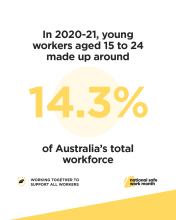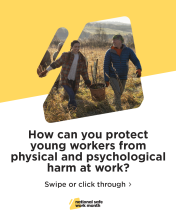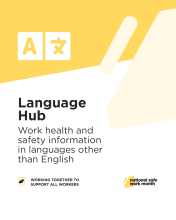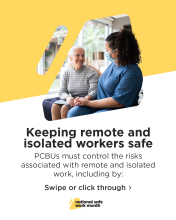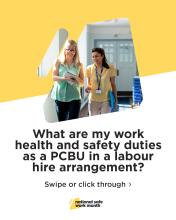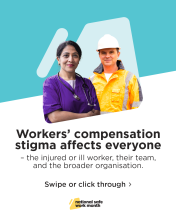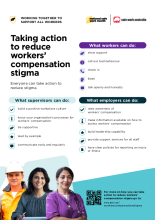When designing safe systems of work, it’s essential to consider the needs of all workers. This includes understanding and addressing the factors that mean some workers may be at higher risk of harm.
Being younger, having a culturally and linguistically diverse background, working in a more complex contractual chain, such as a labour hire arrangement, working alone or in an isolated location, or returning to work after an injury or illness can make workers more vulnerable to harm.
By working together, we can make work safe for everyone.
Supporting young workers
In their first years of work, young workers learn habits, skills and attitudes they carry through their working lives. Keeping young workers safe and building their understanding of WHS contributes to safer workplaces for everyone.
Persons conducting a business or undertaking (PCBUs) can help to minimise the risks to young workers by addressing the factors that mean they are more likely to experience harm at work, such as lack of experience, awareness or confidence in reporting issues.
For example, ensuring young workers have the necessary training and supervision to work safely, and putting in place appropriate mechanisms for workers to report incidents and issues.
Supporting workers from culturally and linguistically diverse backgrounds
Effective communication about work health and safety is critical to ensuring a safe workplace for all workers.
Workers from culturally and linguistically diverse (CALD) backgrounds and migrant workers can be at increased risk of harm at work due to ineffective communication. This is particularly significant because CALD and migrant workers are over-represented in high-risk industries and occupations, including the agricultural, health care and social assistance sectors.
Tailoring communication to the information needs and abilities of workers, and ensuring all workers understand the hazards and risks in their workplace, are important steps for PCBUs to protect the health and safety of everyone in the workplace.
Remote and isolated workers
Working alone or in a remote location can increase the health and safety risks of any job.
Remote or isolated work can involve physical and psychosocial hazards, with the risks increased because of poor access to support and emergency assistance.
PCBUs have duties to manage the health and safety risks that can arise for remote and isolated workers, including by managing environmental risks, preparing for emergencies, and managing psychosocial hazards.
Protecting labour hire workers
Working in labour hire arrangements, can mean labour hire workers are at increased risk of work-related injury or illness. This can occur if there is uncertainty about who is responsible for health and safety in the workplace.
In labour hire arrangements, both the labour hire agency and host organisation are PCBUs responsible for the health and safety of labour hire workers.
PCBUs involved in labour hire have a duty to ensure the health and safety of labour hire workers. This includes working together and consulting with other PCBUs on how to manage WHS risks. Each PCBU also has a duty to consult with their workers and any health and safety representatives.
Reducing workers’ compensation stigma
After a work-related injury or illness, one of the most important factors contributing to a worker’s recovery and safe return to work is whether they have a supportive and inclusive work environment, free from stigma around workers’ compensation.
Workers’ compensation stigma is negative stereotyping or discriminating against a worker seeking workers’ compensation. It can prevent injured or ill workers from making a workers’ compensation claim or delay their recovery.
We can all contribute to creating a positive and supportive work environment that reduces workers’ compensation stigma.
Keeping all workers safe from physical and psychological harm benefits everyone. During National Safe Work Month, take the time to discuss how WHS risks can affect workers differently, so we can work towards safe and healthy workplaces every day of the year.
Resources:
Young workers
Workers from culturally and linguistically diverse backgrounds
Labour hire
Remote and isolated workers
Workers’ compensation stigma
This October we will focus on a different health and safety area for each week of National Safe Work Month.
Stay updated
To keep updated about National Safe Work Month, follow us on social media and subscribe to our mailing list. When subscribing, be sure to check ‘National Safe Work Month’.
Subscribe | Facebook | LinkedIn | YouTube | SoundCloud | #safeworkmonth


